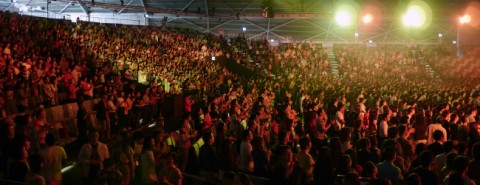Megachurches in Singapore

Over the past three years, a major church scandal has unfolded in the island state of Singapore (literally, the “Lion City”). The target of investigation is the mighty City Harvest megachurch, which claims more than 20,000 adherents. Founding pastor Kong Hee has been accused of diverting at least $20 million to support his wife’s pop music career. Several other church leaders have been implicated in alleged cover-ups.
At first sight such a scandal might seem unremarkable. Sadly, clergy on all continents sometimes fail to live up to their principles, and churches often lack accountability.
What is astonishing is the existence of megachurches in Singapore, and their enormous popularity. This fact challenges much of what we commonly think we know about the nature of Christianity outside its traditional Euro-American heartlands. It also raises basic questions about the process of secularization.





